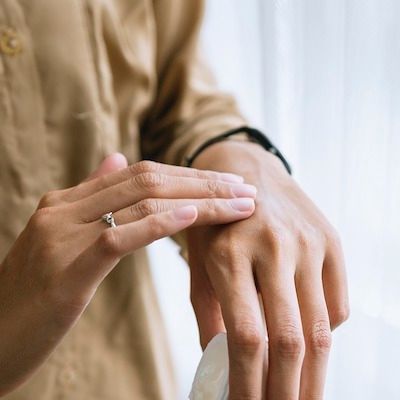News
Article
Apremilast Effective, Safe Among Psoriasis Patients with Special Area Involvement
Author(s):
This analysis among Japanese patients highlights the potential of apremilast for psoriasis patients not responding to topical therapy who may have limited systemic treatment options.
Credit: Pixabay

Apremilast is efficacious and safe for patients with mild psoriasis and those with special area involvement, according to recent findings, suggesting the drug is an effective systemic option for those not adequately supported by topical treatments.1
These conclusions resulted from a previously-detailed, phase 3b study conducted at 28 sites in Japan, and the research was led by Masatoshi Abe of the Sapporo Skin Clinic in Sapporo, Japan. Abe et al. noted that PROMINENT had been a phase 3b multicenter, open-label, single-arm trial assessing patients whose psoriasis had not been controlled by topicals alone.
The drug, approved in the US and Japan for psoriasis, was combined with existing topical options. It showed efficacy as well as tolerability over a 32-weeks course in PROMINENT.2
“Because psoriasis presents across severities and in different areas from one patient to another, there is an opportunity within the PROMINENT dataset to evaluate the efficacy of apremilast across disease severities and special areas involved in Japanese patients,” Abe and colleagues wrote. “This analysis assessed apremilast efficacy and safety over 32 weeks in patients stratified by baseline static Physician Global Assessment (sPGA) score (2 [mild] or 3 [moderate]) and special area involvement in PROMINENT.”1
Background and Design
The investigators noted that the design and characteristics of those featured in the participant population had been described previously. It specifically involved subjects with mild to moderate plaque psoriasis that had not been adequately controlled by topicals alone.
There was a 5-day dose titration, those participating were given 30 mg of apremilast orally at a twice-per-day regimen (BID), alongside their stable topical treatments, for a total of 16 weeks. From Weeks 16 to 32, patients could reduce their topical treatments at their physician’s discretion while continuing apremilast at 30 mg BID.
Subjects had been biologic-naive adults in the age range of 20 years or older, with chronic plaque psoriasis for 6 or more months before the point of baseline. Patients also were required to have been implementing topicals for 4 weeks minimum prior to baseline and to have an sPGA score of 2 (mild) or 3 (moderate).
The main endpoints from PROMINENT had been the achievement of an sPGA score of 0 (clear) or 1 (almost clear) by the 16-week mark. The research team had also used a predefined subgroup analysis of the main endpoint at the 16-week mark to evaluate rates of response using baseline disease severity measurements.
The team’s post-hoc analysis involved the assessing of both the primary and secondary endpoints at the 16 and 32-week marks within subgroups, defined by baseline disease severity and baseline involvement of special areas (Scalp Physician’s Global Assessment [ScPGA] score ≥ 2 and Nail Psoriasis Severity Index [NAPSI] ≥ 1). They evaluated the proportions of subjects with a ≥ 50% or ≥ 75% reduction from the point of baseline in Psoriasis Area and Severity Index (PASI) scores
Additionally, the investigators examined changes from the same point in psoriasis-involved Body Surface Area (BSA), proportions of participants with ≥ 75% BSA reductions from baseline (BSA-75), proportions reporting a ≥ 50% reduction from baseline in NAPSI score (NAPSI-50; for those with NAPSI ≥ 1 at baseline), and proportions reporting ScPGA scores of either 0 or 1 (for subjects showing ScPGA scores of ≥ 2 at baseline).
The research team also looked at the participants’ mean changes from the point of baseline in Shiratori’s Pruritus Severity Score, the mean percent change in subjects’ pruritus visual analog scale (VAS), the mean changes in Dermatology Life Quality Index (DLQI), those reporting a Patient Benefit Index (PBI) of ≥ 1, and the proportion of subjects achieving a DLQI score of 0 or 1.
Findings
Among those who had an sPGA of 2 at baseline, 62.7% were reported by the investigators to have reached an sPGA score of 0 or 1 by the 32-week mark. However, only 30.7% of subjects with an sPGA of 3 at baseline were able to get comparable scores. Despite participants’ sPGA scores, improvements in nail, skin, scalp issues, and overall life quality were highlighted at the 32-week mark.
Such outcomes were also observed by the investigators among subjects that reported scalp or nail involvement. Adverse event rates were found by the research team to have been comparable between subjects with baseline sPGAs of 2 and subjects with a baseline sPGA of 3.
“This study supports the addition of apremilast in patients not responding to topical therapy,” they wrote. “Apremilast may potentially be a beneficial treatment option for Japanese patients who have limited systemic treatment options for mild to moderate psoriasis.”
References
- Abe, M., Okubo, Y., Takahashi, H. et al. Consistent Efficacy of Apremilast in Patients with Psoriasis Regardless of Baseline Disease Severity or Special Area Involvement: Subgroup Analysis from PROMINENT. Dermatol Ther (Heidelb) 14, 1587–1597 (2024). https://doi.org/10.1007/s13555-024-01179-z.
- Okubo Y, Takahashi H, Hino R, Endo K, Kikuchi S, Ozeki Y, et al. Efficacy and safety of apremilast in the treatment of patients with mild-to-moderate psoriasis in Japan: results from PROMINENT, a phase 3b, open-label, single-arm study. Dermatol Ther (Heidelb). 2022;12:1469–80.





